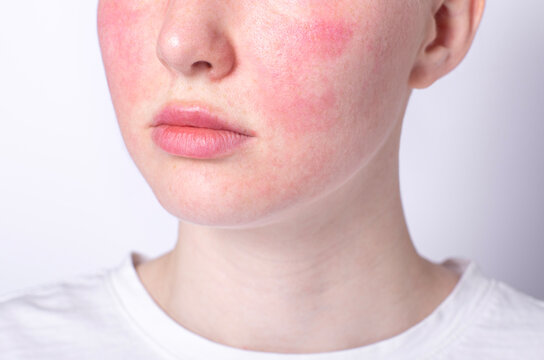Noticing red spots on your skin can be unsettling. Are they just a harmless rash, or could they signal something more serious? Understanding what these spots mean and what causes them is essential to addressing your concerns. This guide will walk you through everything you need to know about red spots on the skin, from common causes to when you should seek medical attention.
Understanding Red Spots on Skin
What Are Red Spots?
Red spots are discolored patches that appear on the skin, ranging from tiny dots to larger blotches. They can be flat, raised, itchy, or even painful. These spots may be isolated or spread across different areas of the body, depending on their cause.
Why Red Spots Appear
Red spots can result from a variety of triggers, including allergic reactions, infections, or underlying health conditions. External factors, such as sun exposure, and internal factors, like immune system responses, both play a role in their development.
Check Out:
Must-Try Winter Skincare Tips for Glowing, Soft Skin
Common Causes of Red Spots on Skin
Allergic Reactions
Allergic reactions are one of the most common reasons for red spots. Exposure to allergens like pollen, certain foods, or skincare products can lead to hives or itchy red patches. These spots often appear suddenly and may resolve once the allergen is removed.
Heat Rash
Heat rash, also known as prickly heat, occurs when sweat becomes trapped under the skin. This condition is common in hot and humid weather, particularly among babies and young children. It typically presents as tiny red bumps and clears up with cooling measures.
Infections
Certain infections can cause red spots to appear. Viral infections like chickenpox and measles create distinct patterns of red spots, while fungal infections might lead to scaly patches. Bacterial infections, such as impetigo, can also result in red, crusty lesions.
Skin Conditions
Chronic skin conditions like psoriasis, eczema, and rosacea often include red spots as a symptom. These conditions may flare up periodically and require long-term management.
Petechiae and Purpura
Petechiae are tiny red or purple dots that occur when small blood vessels break, while purpura are larger patches caused by bleeding under the skin. Both can indicate serious underlying issues, such as blood disorders or infections, and warrant medical evaluation.
When to See a Doctor
Warning Signs to Watch For
Not all red spots are harmless. If your spots don’t fade when pressed, or if they’re accompanied by symptoms like fever, swelling, or difficulty breathing, it’s time to see a doctor. Persistent or worsening spots should also be evaluated.
Conditions Requiring Immediate Attention
Serious conditions like meningitis or sepsis can manifest as red spots. These situations demand urgent medical attention, as early treatment can be life-saving.
Diagnosing Red Spots on Skin
Medical History and Examination
A doctor will start by asking about your medical history and symptoms. Questions about recent activities, diet, and exposure to allergens help narrow down potential causes. The physical examination will focus on the size, shape, and distribution of the spots.
Diagnostic Tests
To confirm a diagnosis, additional tests may be necessary. Skin biopsies can identify conditions like psoriasis or eczema, while blood tests may reveal infections or immune system issues. Imaging tests might also be used in complex cases.
Treatment Options for Red Spots
Over-the-Counter Remedies
For mild cases, over-the-counter options like antihistamines, hydrocortisone creams, or calamine lotion can relieve itching and reduce redness. These treatments work well for allergic reactions and minor rashes.
Prescription Treatments
For more severe or persistent cases, prescription medications may be required. Antibiotics treat bacterial infections, while antiviral drugs address conditions like chickenpox. Chronic skin conditions often benefit from specialized creams or oral medications.
Lifestyle and Home Remedies
Simple remedies like cold compresses, oatmeal baths, and avoiding irritants can provide relief. Keeping your skin clean and moisturized is also key to preventing further irritation.
Preventing Red Spots on Skin
Avoiding Triggers
Identify and avoid known triggers, such as allergens or harsh skincare products. Protective measures like wearing sunscreen and appropriate clothing can also help.
Healthy Skin Practices
Adopting a consistent skincare routine can prevent many skin issues. Stay hydrated, eat a balanced diet, and use gentle, non-comedogenic products to maintain healthy skin.
Myths About Red Spots on Skin
All Red Spots Are Harmful
Not all red spots indicate a serious problem. Many are benign and resolve on their own, such as heat rash or mild allergic reactions.
Home Remedies Can Cure Everything
While home remedies can alleviate symptoms, they’re not a substitute for professional medical advice. Persistent or severe cases require a doctor’s attention.
Conclusion
Red spots on your skin can stem from a wide range of causes, from minor irritations to serious health conditions. By understanding their potential triggers and symptoms, you can take proactive steps to address and prevent them. Remember, when in doubt, it’s always best to consult a healthcare professional to ensure your skin’s health and safety.
FAQs
1. Are red spots on the skin always a sign of a serious condition? Not necessarily. Many red spots, like those from heat rash or minor allergies, are harmless and temporary.
2. Can stress cause red spots to appear? Yes, stress can trigger or worsen certain skin conditions, leading to red spots.
3. How can I tell if red spots are from an allergy? Allergic reactions often come with itching, swelling, or hives and may appear shortly after exposure to the allergen.
4. Are red spots contagious? Some, like chickenpox or measles, are contagious, while others, such as eczema or psoriasis, are not.
5. What’s the best way to prevent red spots on the skin? Maintain a healthy skincare routine, avoid known triggers, and protect your skin from excessive sun exposure or irritants.


